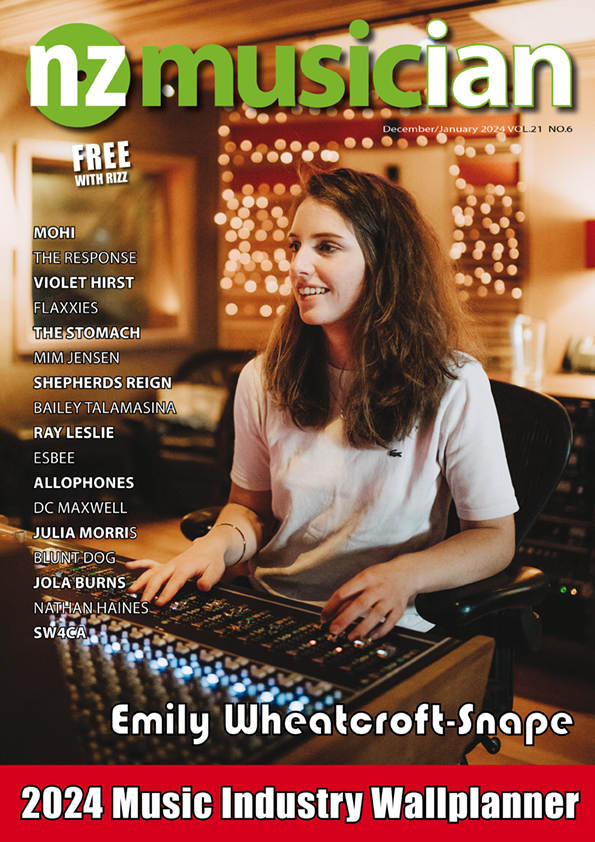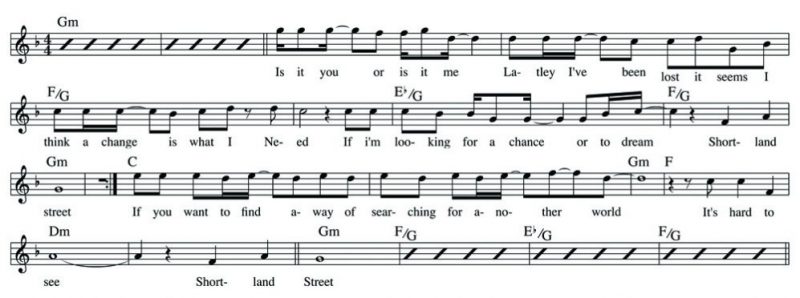X-Factory: Shortland Street TV Theme – Graham Bollard
X-Factory: Shortland Street TV Theme – Graham Bollard
The longest running NZ TV theme of all time has by now ear-wormed its way through the conscious (and subconscious) sound world of multiple generations of Kiwis and international listeners alike. The 26-year consistency of public television broadcast of the show definitely helps to promote memorability of the theme, but I wonder also if the reason I find myself randomly humming the tune (and I regularly do) is because of its clear and purposeful construction – it’s undeniably catchy.
Firstly I transcribed the earliest version played during the closing credits from way back in 1992, as this contains the shift to the glorious B section that is not present in the instrumental edit used for the opening credits.
The abbreviated opening theme works efficiently on many levels to hook the audience in. The melodic rhythm is highly varied with subdivisions of the meter ranging from semiquaver to semibreve fusing rhythmic cells into strong three-note groups on beats one and three (utilising single weak note/word pickups in-between). These accentuate the contour of the couplet rhyme scheme setting up “me”, (the secondary “seems”) and “need” followed by the lovely assonate grouping “dream” and “street”.
Melodic direction is overwhelmingly linear, descending an octave (plus an F neighbour note) from tonic G to tonic G utilising a diatonic scale set based on G minor and omitting the 6th degree, which by harmonic implication at measure six of the melody, suggests an Eb (G Aeolian)
G Aeolian minor is a somewhat sombre key to launch a soap opera but the rising cadential passage Eb through F to Gm (bVI – bVII – i) provides a sense of fruition that is hard to beat, a canny and powerful device much utilised in pop songs (you will have heard the major key version of this progression which uses bVI – bVII – I and is even more triumphant).
I asked composer Graham Bollard about the choice of low key and the vocal session with Tina Cross he produced at Stebbings, because it’s always interesting to learn how musicians approach these things. He replied that it only took 45 minutes.
“The key (Gmin) was the original one from my demo. It was on the lower side for her but I think the song suited it. Once she found a slightly ‘breathy’ soft approach towards singing it the idea worked.”
The song’s initial construction was, he says, done in a roundabout way.
“The backing music was something I had lying around that I’d made a year or two earlier to test a new sampler. I decided to use that as the starting point and to try writing a vocal melody over it.
“I remember the brief for the theme being very rough. I knew the programme title and that it was a medical ‘soap/drama’ focusing on everyday relationships, but that’s about all. I must have had the melody well established in my head as I recall writing the lyrics sitting in my car in Mt Eden.”
To my ears the theme plays out like a mini pop song with verse 1a, verse 1b, bridge and a refrain extension over verse harmony (the harmonic rhythm is halved during this section, providing a heightened sense of momentum, very cool touch). The bridge lifts to the major IV chord ‘C’ which is non diatonic and slightly unexpected after the preceding G Aeolian verse.
The very first note Tina Cross sings is a startingly ‘E’ natural, the first time the listener has heard any kind of ‘E’ note in the melody up to this point. It’s dramatic and shifts the harmonic perspective to G Dorian, a much more uplifting key that coincides nicely with the (slightly more positive) change in tone of the lyric.
Over the course of 26 years many iterations of the theme have been revamped with new technology to accommodate the stylistic advances heard in popular music and instrumental edits were utilised from the outset. One of my favourite versions incorporated a full two verses and three bridges – I asked Graham if this full-length song-form version was written first and then chopped down into suitable edits, or had he written additional sections of the song as he went along over the seasons?
“It was originally only written as a one minute vocal song. I never intended it to be an instrumental… so it was difficult to make it into one. I’m fairly satisfied by the 2008 instrumental but that only went to air for a year and a half. The longer version you’re refering to was a three minute promo version from 1993 that was given away as a free gift at various times. Tina did another session at my house and I wrote some extra verses for it.”
How many versions he has he created over the years?
“Too many… haha. In my ‘themes’ folder there are 16 files. There are more than that though since it doesn’t include the very early ones.”
Graham continues to work as underscore and music supervisor on the show, prepping each episode in an unbelievably short amount of time.
“I get the video files on Friday and have to deliver the whole weekly block by Wednesday the following week, so I start Friday and finish five episodes by Tuesday. As well as underscores and background tracks that I’ve written we use some production music too since it’s a lot required in a very short space of time. I would estimate 15-20 underscores and 20-30 background tracks”.
The show and definitely the music have rightfully earned a place in Kiwi hearts and ears over the years. Reading the comments posted on Youtube below various Shortland St uploads suggests that even hearing the theme can be extremely nostalgic for some people living overseas, and most adults I asked during the writing of this article could mumble/sing most of the song… with words!
So impactful is Graham Bollard’s theme amongst other things it has been gloriously reworked by something called The Bellavista Orchestra into an epic 5:00 general-Midi synth parade and out of tune ‘saxama-phonathon’ (complete with a modulation a tone up for the last bridge) and included on a compilation album of Great TV Medical Drama Themes!
Best to just listen to the original, again.
Godfrey de Grut is a Silver Scroll co-winner with Che Fu, MD of the 2013 & 2015 Silver Scrolls and co-artistic director of Coca Cola Christmas in the Park 2015. He is a freelance writer, arranger and producer, lecturing in popular music studies at the University of Auckland. Follow his musical ramblings @GodfreyDeGrut on Twitter or email godfrey.degrut@gmail.com


